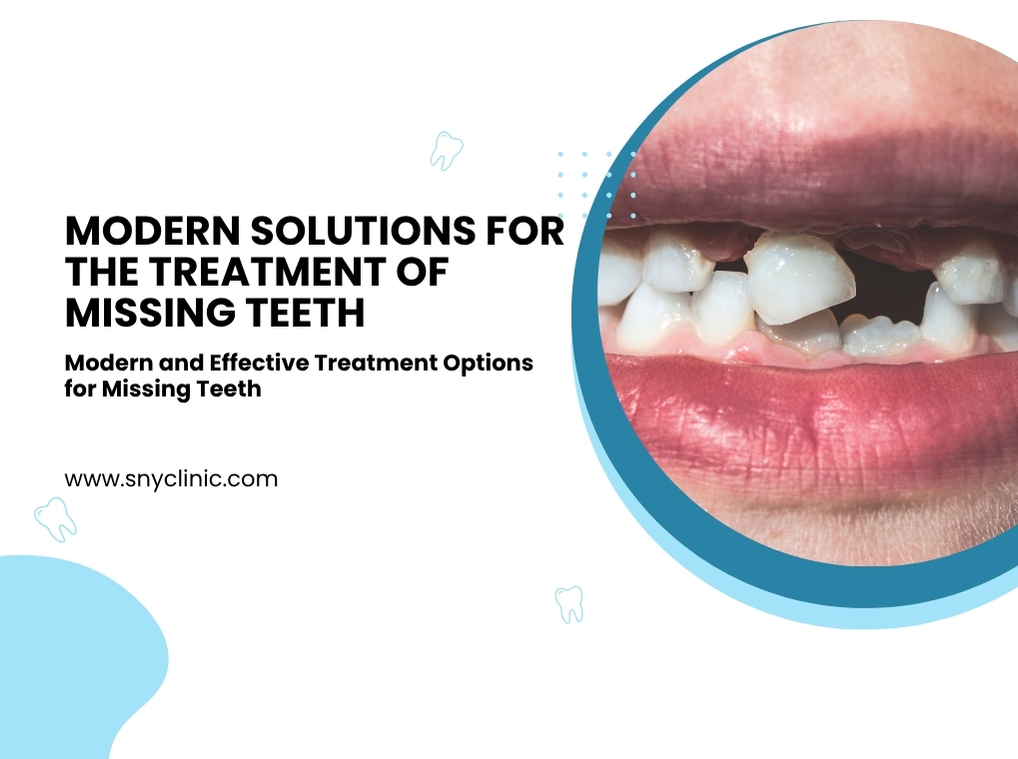
Modern Solutions in Tooth Loss Treatment
Modern Solutions in Tooth Loss Treatment
Your mouth is like a delicate mechanism where all parts work harmoniously together. Each tooth plays a uniquely critical role in this structure. Losing a tooth doesn't just mean there's a gap in your mouth—it fundamentally disrupts the balance of your entire oral system. Over time, neighboring teeth begin to shift into the gap, your chewing pattern changes, and a chain of health issues may be triggered without you even realizing it.
Fortunately, you don’t have to accept this situation. Advancements in dental technology are here to restore that lost balance and offer you personalized solutions that are both functional and aesthetically pleasing. Let’s take a closer look at the underlying causes and what modern treatment alternatives can offer you.
Why You Should Never Ignore a Missing Tooth
Especially when it comes to missing back teeth, many people don’t see it as a visual issue. However, this type of tooth loss can have far more serious consequences than expected.
Shifting of Adjacent Teeth: Nature abhors a vacuum, and your teeth follow this principle. Gaps in your mouth gradually cause surrounding teeth to tilt or move toward the empty space. This disrupts alignment and negatively affects your chewing function.
Jawbone Loss (Resorption): Teeth don’t just help you chew; they also stimulate your jawbone to keep it healthy. When a tooth is lost, this natural stimulation ends. The unstimulated bone area begins to weaken and lose mass. In the future, this can complicate treatments like implants, and may even require additional surgical procedures.
Chewing and Digestion Problems: Missing multiple teeth makes it harder to chew food properly, placing extra strain on your digestive system.
Speech Disorders: Missing front teeth can make it difficult to pronounce certain sounds, leading to a lisp.
Facial Aesthetic Changes: Bone loss and shifting teeth can eventually result in a sunken facial profile.
Modern and Effective Treatment Options for Missing Teeth
Depending on the number and location of missing teeth, your jawbone condition, and your budget, there are three main treatment methods you and your dentist can consider:
1. Dental Implants: The Most Permanent and Natural Solution
One of the most effective and long-lasting solutions in modern dentistry, implants are artificial roots made of titanium that replace missing teeth. These roots integrate with the jawbone and function like natural tooth roots. When topped with a prosthetic crown, they offer both aesthetic and functional success.
How It's Done: A titanium screw is surgically inserted into the jawbone. Once the healing process is complete and the implant fuses with the bone (osseointegration), a porcelain crown is placed on top.
Advantages:
- Highly durable and provides a natural chewing feel.
- Can be placed without affecting adjacent healthy teeth.
- Prevents jawbone loss by providing stimulation.
- Can last a lifetime with proper care.
Who Can Get It? Anyone in good general health with sufficient jawbone density is typically a good candidate.
2. Dental Bridges: A Quick and Aesthetic Alternative
Bridgework involves using adjacent healthy teeth to support a prosthetic tooth that fills the missing space. It’s a practical and aesthetically pleasing method that can be completed relatively quickly.
How It's Done: The adjacent teeth (abutments) are slightly reduced in size. A lab-made bridge consisting of three or more connected crowns is then cemented onto these teeth. The middle crown replaces the missing tooth.
Advantages:
- Faster than implant treatment.
- Does not require surgery.
- Fixed in place, providing ease of use and a natural look.
Disadvantages:
- Requires trimming healthy adjacent teeth.
- Does not prevent bone loss beneath the missing tooth area.
3. Removable Dentures (Partial or Full)
A practical solution, especially for patients with multiple missing teeth or who are not candidates for implants or bridges.
How It's Done: Artificial teeth are mounted on an acrylic or metal base and held in place using special attachments or metal clasps on existing teeth.
Advantages:
- More economical compared to other treatments.
- Easy to apply and doesn’t require surgery.
Disadvantages:
- Must be removed and cleaned after every meal.
- May cause initial difficulties with speaking or taste.
- Not as comfortable or stable as fixed prosthetics.
Which Treatment Method is Right for You?
The answer to this question is unique to each person. Factors to consider include:
- Number of Missing Teeth: A single missing tooth often makes implant the first choice.
- Bone Health: Implants are ideal if the jawbone has sufficient density and volume; otherwise, bridges or dentures may be better.
- Budget: Removable dentures are the most affordable option, while implants have a higher upfront cost.
- Expectations: If longevity and a natural look are priorities, implants are preferable; if speed is important, bridges are a quicker option.
Don’t Wait—Regain Your Smile!
Tooth loss is a health issue that can lead to more complex and costly problems over time. Beyond aesthetic concerns, filling this gap with a professional solution is one of the most important steps you can take to protect your overall health.
Consult a dentist to determine the most suitable treatment method for you and restore your smile with confidence. Remember, a healthy smile is one of the most valuable investments you can make in yourself.




